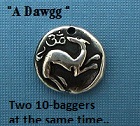The Shady History of Big Sugar Charlottesville,
Post# of 52113

Charlottesville, Va. — On Monday, an article in JAMA Internal Medicine reported that in the 1960s, the sugar industry paid Harvard scientists to publish a study blaming fat and cholesterol for coronary heart disease while largely exculpating sugar.
This study, published in the prestigious New England Journal of Medicine in 1967, helped set the agenda for decades of public health policy designed to steer Americans into low-fat foods, which increased carbohydrate consumption and exacerbated our obesity epidemic.
This revelation rightly reminds us to view industry-funded nutrition science with skepticism and to continue to demand transparency in scientific research. But ending Big Sugar’s hold on the American diet will require a broader understanding of the various ways in which the industry, for 150 years, has shaped government policy in order to fuel our sugar addiction.
Today’s sugar industry is a product of the 19th century, when the key federal sugar policy was not a dietary guideline but a tariff on sugar imports. In the decades after the Civil War, Americans’ per capita consumption of sugar more than doubled, from 32 pounds in 1870 to 80 pounds in 1910. As a result, the government got hooked on sugar, too: By 1880, sugar accounted for a sixth of the federal budget.
To protect domestic refiners, then the largest manufacturing employer in Northern cities, the tariff distinguished between two kinds of sugar: “refined” and “raw.” Refined sugar that was meant for direct consumption paid a much higher rate than did raw sugar crystals intended for further refining and whitening. But by the late 1870s, new industrial sugar factories in the Caribbean began to jeopardize this protectionist structure. Technologically sophisticated, these factories could produce sugar that, while raw by the government’s standard, was consistently much closer to refined sugar than ever before (akin to sweeteners such as Sugar in the Raw today). The American industry now faced potential competition from abroad.
The country’s largest refiners mobilized on several fronts. They lobbied the United States Congress to adopt chemical instruments that could measure the percentage of sucrose in a sugar cargo, and to deem sugar refined when its sucrose content was sufficiently high. Previously, customs officers had judged the purpose of a sugar cargo by its color, smell, taste and texture, as people throughout the sugar trade had done for centuries. Now refiners argued that such sensory methods were ripe for abuse because they depended on a subjective appraisal. They demanded a scientific standard instead — one that would reveal some “raw” sugar to be nearly pure and thus subject to higher tariffs — and they prevailed.
Their plea for scientific objectivity may have sounded sensible, but it masked nefarious aims. Like the tobacco industry in the 1960s, these refiners knew that scientific questions were hard for outsiders to adjudicate, and thus easier to manipulate to an industry’s advantage. If refiners were to bribe a customs chemist to shade his results in their favor — as they were routinely accused of doing for decades, beginning in the 1870s — such corruption would be much harder for the government to detect than it had been when everyone could see and smell the same sugar.
In addition to their lobbying, refiners waged a public campaign to dissuade Americans from eating raw sugar. One of their common advertisements featured a disgusting insect that supposedly inhabited raw sugar and caused an ailment called “grocer’s itch” in those who handled it. Other pamphlets suggested that Cuban factories operated by slaves or Chinese indentured workers would “give the people sugar teeming with animals and Cuban dirt.”
The refiners’ real agenda, of course, was not Americans’ health; it was to maximize their profits from selling sugar. Thanks in part to their influence over both tariff policy and the new methods of customs collection, the big refiners were soon able to form the Sugar Trust, one of the most notorious and successful monopolies of the Gilded Age. By the early 20th century, belief in the health benefits of refined sugar was so widespread that increasing Americans’ consumption of it actually became a goal of federal policy.
Looking back at the industry’s transformation of sugar (an edible substance derived from a plant) into sucrose (a molecule), we also see the roots of “nutritionism” in United States policy. That’s the idea that what matters to human health is not food per se but rather a handful of isolable biochemical factors. As food critics like Michael Pollan and Marion Nestle have argued, nutritionism is better at helping processed-food companies market their products as healthy (“with Omega-3 added!”) than it is at promoting our well-being.
Today, the sugar industry remains politically powerful, with consequences for both public health and the environment. The Miami Herald reported this summer, for example, that the industry contributed $57 million to Florida elections in the last 22 years; meanwhile, state officials have resisted efforts to make sugar companies pay for their damage to the Everglades.
If we want to check the power of Big Sugar, we’d be well served to acknowledge the long record — past as well as present — of the industry’s machinations.

 (0)
(0) (0)
(0)